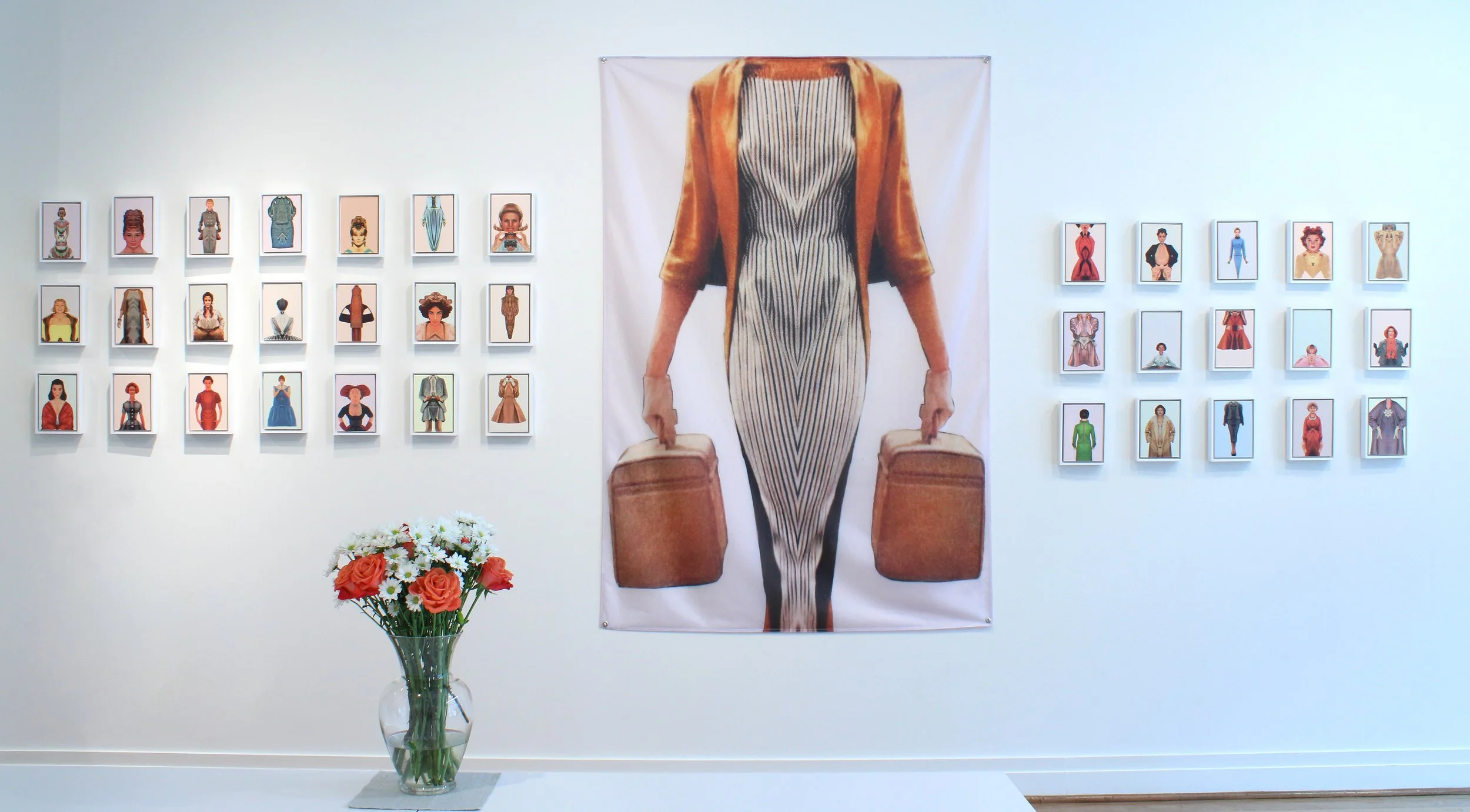Bodies of Work: Susan R. Johnson streamlines women from the bad old days
By: Mark Jenkins
SLEEK AND MACHINED, THE WOMEN OF SUSAN R. JOHNSON'S "Symmetrical Bodies" are idealized to the standards of an earlier era. The artist paints over digital collages made from what appear to be mid-20th-century American advertising and fashion images. The impeccably garbed creatures who promenade in the Gallery Neptune & Brown show are elegant but eerie.
Five years ago, Johnson's "Hall of Portraits from the History of Machines" filled a VisArts Gallery with entities amalgamated from women and such domestic devices as irons and sewing machines. The artist leaves such gadgets out of her newer work, but that doesn't mean the beings in her pictures now appear human. They're automatons, engineered from near-obsolete stereotypes rather than diodes and shaped metal. Most are small, but are printed on large banners, as to emphasize their origins in marketing campaigns.
Johnson teaches art at St. Mary's College of Maryland, so it's only to be expected that her work has art-historical grounding. Surrealist Max Ernst and Surrealist-adjacent conceptualist Marcel Duchamp are among the inspirations for her work. Of the three Johnson series excerpted in this show, one is "The Headless Woman," a reference to a Ernst collage novel whose title -- a pun in French -- is rendered in English as "The Hundred Headless Woman." In Johnson's conception, the women lack heads and often legs, but some have hands to clutch pairs of identical handbags or carrying cases.
Another series, "The Curiouser," takes its cues from Alice's Adventures in Wonderland. This venture through the looking glass yields the strangest of Johnson's mutations. Some are broadened unnaturally, as if by a funhouse mirror, and one is squeezed into a hourglass figure more extreme than even the most tyrannical corset could produce. To Johnson's hybrid women, societal control of their roles, appearances, and identities is inherently disfiguring.

